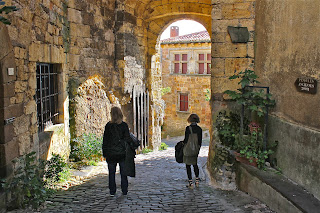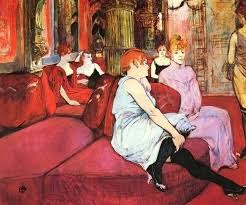Henri Toulouse Lautrec
Born to aristocratic parents, decedents of the Count
of Toulouse and Lautrec. He had a genetic disease
caused by inbreeding (his parents were first cousins)
where his legs were very weak and did not grow, resulting
in him being less than five feet tall. He broke both legs as
a boy and walked with a cane. He was drawn (ha ha) to the
wild side of life and lived among the prostitutes of Paris,
who became the subjects of his entire body of art work.
He had an amazing ability to capture the quirky characteristics
of his subjects. He died at 36 of alcoholism and syphilis leaving
behind a huge collection of work....he was very prolific. Love
this picture of him painting himself.
|

















No comments:
Post a Comment